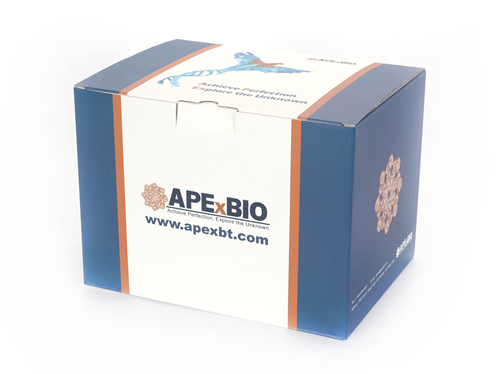Recombinant Human MHC Class I Polypeptide-Related Sequence B
MIC-B (MHC class I chain-related gene B) is a single-pass type I member protein. It is widely expressed in many, but not all, epithelial tumors of lung, breast, kidney, ovary, prostate and colon. In addition to this, it is produced by hepatocellular carcinomas, which is only in tumor cells but not in surrounding non-cancerous tissue and can be induced by bacterial and viral infections. MIC-B shares 85% amino acid identity with MIC-A and they are distantly related to the MHC class I proteins. Because they possess three extracellular Ig-like domains, but unlike classical MHC class I molecules, they do not form a heterodimer with beta2 microglobulin, but bind as a monomer to a KLRK1/NKG2D that is an activating receptor expressed on NK cells, NKT cells, γδ T cells, and CD8+ αβ T cells. Recognition of MIC-B by NKG2D results in the activation of cytolytic activity and/or cytokine production by these effector cells. MIC-B recognition plays an important role in tumor surveillance, viral infections, and autoimmune diseases.
Reference
1. Komatsu-Wakui M, Tokunaga K, Ishikawa Y, et al. 1999. Immunogenetics, 49: 620-8
2. Holmes MA, Li P, Petersdorf EW, et al. 2002. J Immunol, 169: 1395-400
3. Gambelunghe G, Falorni A, Ghaderi M, et al. 1999. J Clin Endocrinol Metab, 84: 3701-7.
| Source | Escherichia coli. |
| M.Wt | Approximately 32.8 kDa, a single non-glycosylated polypeptide chain containing 287 amino acids. |
| AA Sequence | AEPHSLRYNL MVLSQDESVQ SGFLAEGHLD GQPFLRYDRQ KRRAKPQGQW AEDVLGAKTW DTETEDLTEN GQDLRRTLTH IKDQKGGLHS LQEIRVCEIH EDSSTRGSRH FYYDGELFLS QNLETQESTV PQSSRAQTLA MNVTNFWKED AMKTKTHYRA MQADCLQKLQ RYLKSGVAIR RTVPPMVNVT CSEVSEGNIT VTCRASSFYP RNITLTWRQD G |
| Appearance | Sterile Filtered White lyophilized (freeze-dried) powder. |
| Stability & Storage | Use a manual defrost freezer and avoid repeated freeze-thaw cycles. - 12 months from date of receipt, -20 to -70 °C as supplied. - 1 month, 2 to 8 °C under sterile conditions after reconstitution. - 3 months, -20 to -70 °C under sterile conditions after reconstitution. |
| Formulation | Lyophilized from a 0.2 μm filtered concentrated solution in 20 mM Tris, 150 mM NaCl, pH 8.0. |
| Reconstitution | We recommend that this vial be briefly centrifuged prior to opening to bring the contents to the bottom. Reconstitute in sterile distilled water or aqueous buffer containing 0.1 % BSA to a concentration of 0.1-1.0 mg/ml. Stock solutions should be apportioned into working aliquots and stored at ≤ -20 °C. Further dilutions should be made in appropriate buffered solutions. |
| Biological Activity | Fully biologically active when compared to standard. The specific activity is determined by binding MICB antibody in ELISA. |
| Shipping Condition | Gel pack. |
| Handling | Centrifuge the vial prior to opening. |
| Usage | For Research Use Only! Not to be used in humans. |
Quality Control & DataSheet
- View current batch:
-
Purity > 95 % by SDS-PAGE and HPLC analyses.
- Datasheet
Endotoxin: Less than 1 EU/μg of rHuMIC-B as determined by LAL method.








